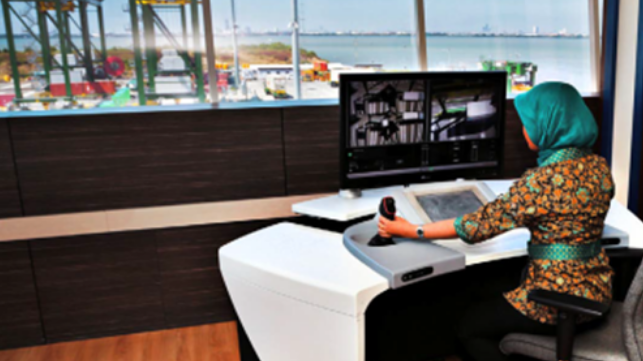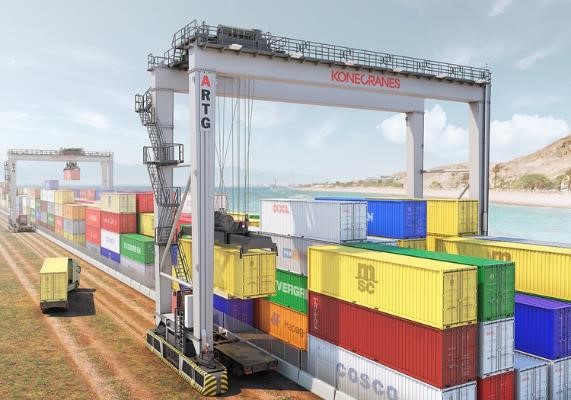Indonesia Increases Automated RTG Fleet

Terminal Petikemas Semarang (TPKS) in Semarang, Indonesia, has added nine new automated Rubber Tyre Gantry (RTG) cranes to its fleet.
The new cranes bring TPKS’ fleet of automated RTG cranes to 20, with the earlier automated RTGs already operating for more than two years. TPKS’ fleet is the first automated RTG installation in the world to be operated on such a wide commercial scale.
TPKS is the second-largest container terminal in the Pelindo III Group, which is an Indonesian state-owned enterprise that manages 43 ports throughout seven provinces in Indonesia. About 70 percent of its container traffic consists of international cargo.
TPKS’ automated RTG cranes include fully automated stacking in the yard, remote operating stations for truck handling and the related container yard infrastructure.
The Konecranes automated RTG system comprises Konecranes 16 wheel automated RTG, equipped with active load control and auto-steering, a remote operating station with an advanced graphical user interface, IT architecture that is seamlessly interfaced with the terminal operating system and an intelligent gate, that acts as the traffic control of the automated RTG container on the block. The system is built around Konecranes’ 16-wheel RTG and combines an intelligent steel structure and Konecranes active load control technology, which enables the RTG to tolerate local variations in areas such as the run-way service, the stacking area and in the rubber tires themselves.
The automated RTG’s anti-collision technology is built on lasers and real-time relative positioning. Trucks are guided safely by a system that integrates truck-scanning and lights. Container picking and placing accuracy is ensured by a scanning system. Automated gantry traveling is accomplished with dual antenna DGPS auto-steering.
Automated RTG version 2.0 cranes are equipped with the latest wireless communication technology, including control signals and video signals that are now wireless. This means that the automated RTGs can be diesel-powered and there is no need for cable reels and fiber optics. Additionally, there’s no need for truck lane fencing, and the automated RTG’s can quickly switch between container blocks without recalibration.

